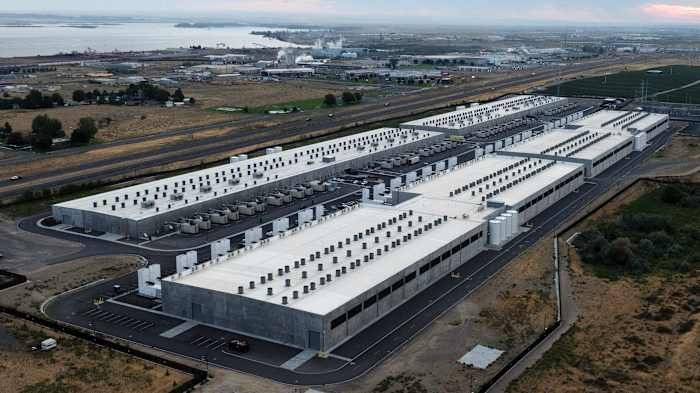Introduction
As the landscape of American infrastructure and technology rapidly evolves, so too does the intersection of policy and progress. One of the latest battlegrounds is the National Environmental Policy Act (NEPA), a cornerstone law that, for over fifty years, has ensured that federal projects consider the environmental and public impacts before breaking ground. With former President Donald Trump’s new AI plan, NEPA is once again in the political spotlight, raising questions about how future projects—both nationally and right here in Orlando—will balance economic opportunity with environmental stewardship. What does Trump’s approach mean for Orlando’s development, our natural resources, and the voices of local residents?
What Is the National Environmental Policy Act?
Enacted in 1970, NEPA is often described as the “Magna Carta” of environmental law in the United States. Its main requirement is that federal agencies must assess the environmental effects of their proposed actions prior to making decisions. This includes everything from highways and airports to major utility projects and, increasingly, large-scale technology infrastructure such as AI data centers.
For communities like Orlando, NEPA has provided an essential platform for public engagement. Residents have had the opportunity to review, comment on, and sometimes challenge projects that could affect air and water quality, wildlife habitats, and overall community health. In a city known for its rapid growth and bustling tourism industry, NEPA’s safeguards have often helped balance economic expansion with protection of our unique ecosystems, including the wetlands and lakes that define Central Florida’s natural beauty.
Trump’s AI Plan: Streamlining or Sidestepping?
As the AI revolution accelerates, the need for massive new data centers, fiber-optic networks, and energy infrastructure is exploding. Trump’s recently unveiled plan to boost American dominance in artificial intelligence includes proposals to “streamline” environmental reviews—a phrase that, for many, signals a weakening of NEPA’s core principles.
The plan suggests shortening the timeline for environmental assessments, reducing the scope of projects subject to full review, and limiting public input on federal projects. Proponents argue this will speed up the deployment of critical infrastructure, create jobs, and keep America competitive in the global AI race. Critics, however, warn that such changes could leave communities like Orlando vulnerable to rushed projects with unforeseen environmental and health consequences.
For Orlando, where the construction of new tech campuses and transportation corridors is already underway, these changes might mean less opportunity for residents to weigh in on projects that could impact traffic, noise, air quality, and even flood risks.
Impacts on Orlando’s Growth and Environment
Orlando is no stranger to major infrastructure projects. From the expansion of the I-4 corridor to the development of the Brightline high-speed rail and continued residential growth, our city has seen firsthand the importance of environmental review. NEPA has played a crucial role in ensuring these projects account for impacts on wetlands, endangered species, and local neighborhoods.
If NEPA’s requirements are weakened, Orlando could see more rapid approvals for large projects, but at what cost? Environmental advocates worry about the potential loss of green spaces, increased pollution, and reduced resilience against climate change-related threats such as hurricanes and flooding—issues that are especially pressing in Florida’s delicate ecosystem.
On the other hand, business leaders and some local officials argue that lengthy reviews can stall much-needed investments and job creation. They believe a more efficient process could help Orlando attract high-tech industries and strengthen its position as a national innovation hub.
The Public’s Voice: Why It Matters
Perhaps the most significant aspect of NEPA is its commitment to public participation. Residents, local officials, environmental groups, and businesses all have a say in how major projects are designed and implemented. This has led to more informed decision-making and, in many cases, better outcomes for both the environment and the economy.
Trump’s AI plan could limit these opportunities. By narrowing the scope of required public comment periods or reducing the length of time for public review, Orlando’s residents may have fewer chances to express concerns or propose alternatives. For a city that prides itself on its engaged and diverse community, this could represent a significant loss of influence over its own future.
Looking Forward: What’s at Stake for Orlando?
The debate over NEPA and Trump’s AI plan is far from abstract. As Orlando continues to grow, the choices we make about how to balance development with environmental protection will shape our city for generations. Will streamlined reviews deliver economic benefits without sacrificing the health of our lakes, parks, and neighborhoods? Or will loosening these long-held safeguards leave Orlando vulnerable to the unintended consequences of unchecked growth?
Local voices will be crucial in shaping the outcome. Whether you’re a business owner, environmental advocate, or resident concerned about your community’s future, understanding the stakes—and staying engaged in the process—has never been more important.
Conclusion
As Trump’s AI plan brings renewed scrutiny to the National Environmental Policy Act, Orlando finds itself at the crossroads of innovation and preservation. The decisions made today will affect our city’s environment, economy, and quality of life for decades to come. We want to hear from you: How do you think Orlando should balance the need for high-tech growth with protecting our environment and public voice? Share your thoughts in the comments below!
















